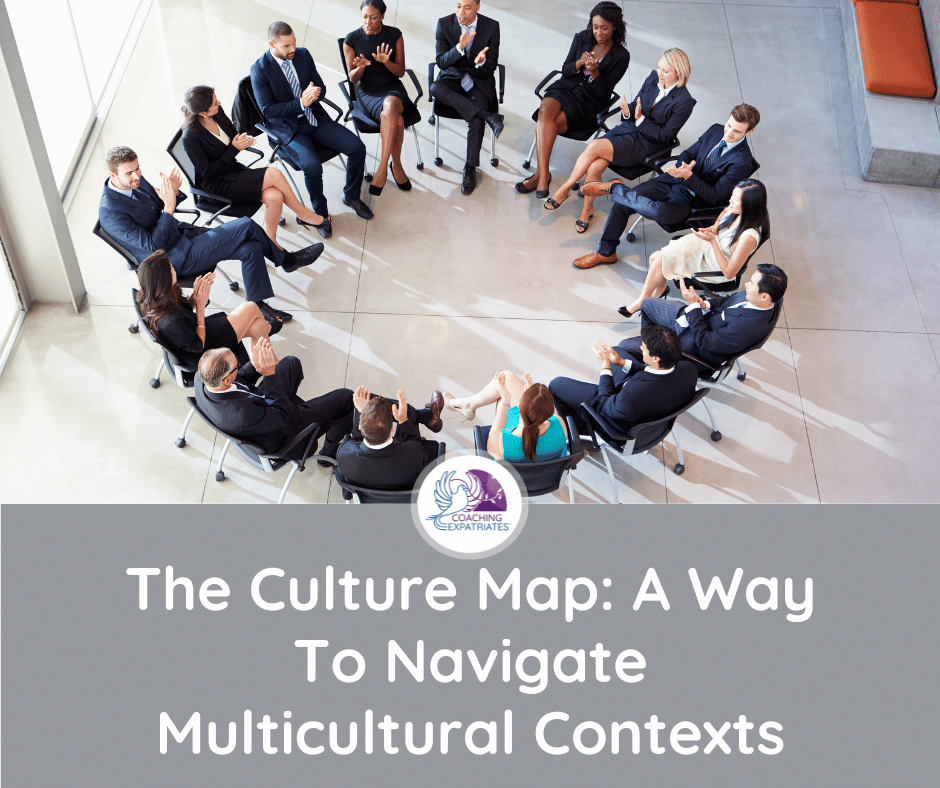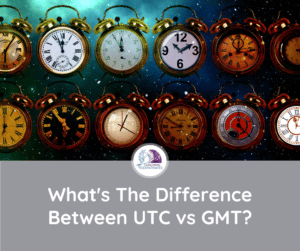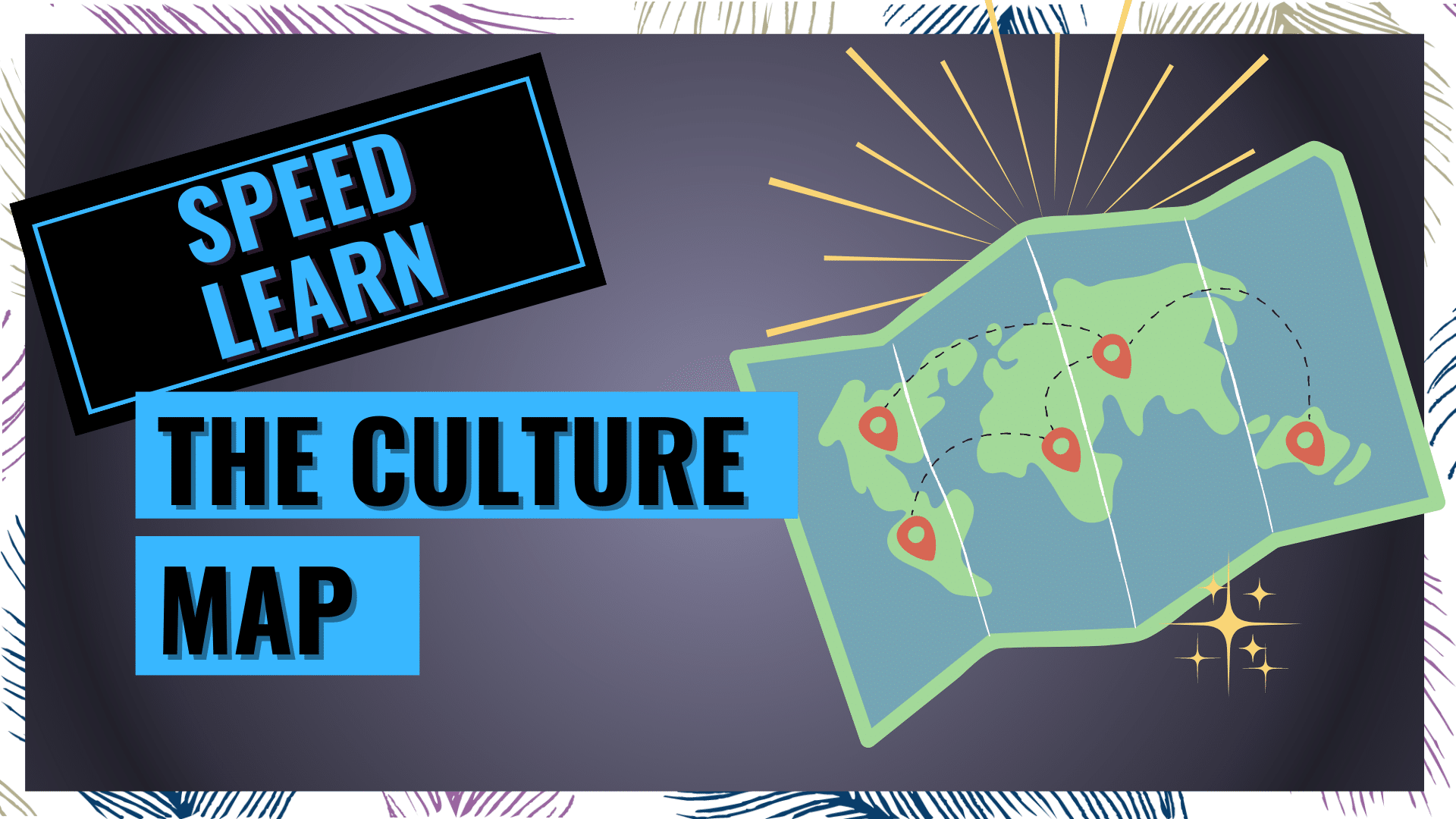
The Culture Map is a concept developed by Erin Meyer, an organizational behavior consultant and affiliate professor in the organizational behavior department of INSEAD business school based in Fontainebleau, France. She discusses this concept in her book, The Culture Map. It leverages the High & Low Context Culture model of communication by narrowing down 8 determinant factors to map culture and how it is positioned in relation to other cultures, as a way to navigate multicultural contexts better. Thousands of companies use this system to navigate multicultural settings and make better decisions. Learn today how you can do it too.

A key point that she stresses out in her book is that you must always compare one culture in relation to another when assessing these 8 factors. And that’s because each of these factors is put on a scale, and where a specific culture will be on the scale depends on where other cultures are also located.
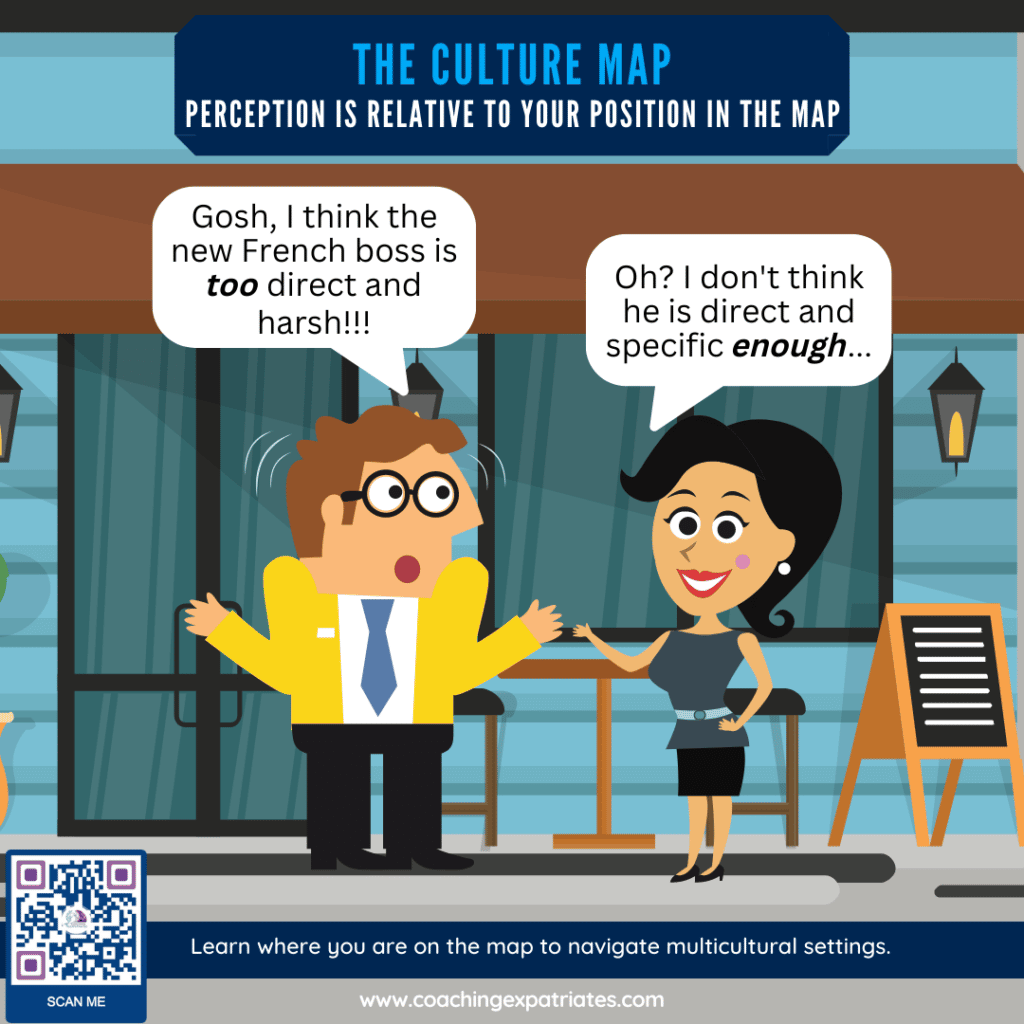
This means Culture A could be to the left of the scale when compared to Culture B, but to the right when compared to Culture C. We will see further an example of the culture map scales, so you can get a better understanding. Hang in there.
But first, let’s discuss the key concepts of The Culture Map and how you can use them when dealing with different multicultural contexts in global corporations. You also see some examples and pro tips recommendations.
Why Should We Use The Culture Map
Many scholars say that globalization started with Columbus’s discovery of a new continent in 1942. However, globalization, as we know it, has developed in the past 50 years. Internet’s wide accessibility expedited this experience and made communication, trade, and interactions even easier.
More than 3 decades ago, I had “international pen friends” to practice English and German. I would write them letters (yes, with pen and paper!) and eagerly wait weeks, sometimes months, to get their response by mail. They would tell me how they faired and about their recent adventures in their own country.
Today, you can instantly communicate with anyone in the world who has access to the world wide web. We can even make international acquaintances through groups or interactions in applications such as Facebook, Instagram, and LinkedIn. We are all connected now. Simple as that.
Like it or not, we interact internationally every day at some level. Who was not yet connected with a customer service representative located in another country? Or received an Amazon (or similar online store) package that was shipped from another country? What about the T-shirts Made-In [you name where]?
We interact internationally every day to a certain degree. If you are a leader, this degree might be even higher since you might have multicultural teams, suppliers, clients, and shareholders to deal with.
Not everyone is made the same, and we are all impacted by the cultures we’ve been touched by. Navigating this salad of history, preferences, backgrounds, and cultural nuances is not easy, but it has become something we absolutely cannot escape from now.

Gaining the skills and abilities to navigate cultural and multicultural contexts has become essential to New Era leaders. Regardless of age, updated leaders seek to learn these capabilities to be more effective professionals. Otherwise, cultural differences can be business killers. And the “kill” is not merciful in these cases.
What Are The 8 Scales In The Culture Map
Gaining cultural competence and navigating multicultural differences is a capability necessary for today’s leaders. To accomplish that, learning how different cultures approach different topics will help one quickly adapt to circumstances and people. One way to learn this is by learning cultural contexts.
If you read my post about Communicating In High and Low Context Cultures, you learned already that this is quite a complex (but fun!) topic. Each cultural context has many nuances. It’s very difficult to keep track of them all in your head while you are having a heated discussion or presenting & discussing a vital business case.
That’s why The Culture Map has narrowed down 8 key factors: so that we can assess things more quickly when doing business. You’ll miss many nuances, that’s right, but you gain a quick helicopter view to immediately take action instead.
Here are the 8 factors:
1) Communicating
How do the cultures being mapped communicate? Are they low or high-context cultures? Do they prefer to be direct and literal, or do they make use of implicit messages, gestures, and body language cues?
Example
During my interviews in Joyride With Expatriates, an American living in Brazil told me he got pretty surprised by how Brazilians respond to quotes and proposals. He said that “Maybe” and even a “Yes” are frequently “Nos.” Brazilians, like many high-context cultures, avoid conflict. Denying, rejecting, and refusing someone is an apparent conflict and might prompt these types of cultures to avert response and even create a white lie for why they are declining or appearing confrontational.
PRO TIP
When doing business and communicating with different cultures, make sure to be very clear about what you expect. If someone says “maybe,” you will never precisely know what they really mean. Ask them when you can follow up on the decision and make them comfortable to say “No,” if it’s the case. For cultures that avoid conflict, the mere fact that you say you won’t be angry and their response will not impact business in the future, is sometimes enough. It creates space for them to be more straightforward.
2) Evaluating
How do the cultures being mapped give feedback, especially negative feedback? Are they direct and blunt, or do they prefer to give it more indirectly and discreetly?
Example
I remember an account of 2 employees talking about the same French boss. The German employee would say their boss was evasive and too indirect when giving feedback. The Chilean employee would say their boss was extremely direct and harsh. It really felt like they were talking about different people. This perfectly illustrates The Culture Map: cultural context is not absolute; it’s relative to where your cultural background stands when having a perspective of another culture.
PRO TIP
A lot of people fear managing up. But, sometimes, providing all parties with more clarity in expectations can be key for good evaluation, no matter your position in the hierarchy. Whether you are the boss or the employee, before evaluations and feedback sessions, you can agree with the parties involved about key points to talk about and their scales of measure. You could leverage this idea even if the initial evaluation session went south. You can ask to have a follow-up session to discuss specific points. For example, if your boss says you need to “improve communication skills,” which sounds too broad or evasive for you, in the follow-up session, you can bring key communication skills for them to assess you on a scale from 1 to 10. Let’s say you select verbal articulation, body language expression, listening abilities, written articulation, clarity in exposing ideas, etc. Ask them to rate you and tell you what you would need to do in order to move 1 or 2 points ahead in the scale for that topic. Some people are internal processors and will need time to think and answer. Ask if they need a follow-up meeting for their answers.
3) Leading
How do the cultures being mapped lead? Do they give a lot of weight to hierarchies and authority, or are they more focused on egalitarianism?
Example
According to the World Economic Forum, Iceland is the most egalitarian society in the world. Leaders from hierarchical cultures, like Japan or China, going to egalitarian countries like Iceland and Finland might get shocked by how people “treat” them.
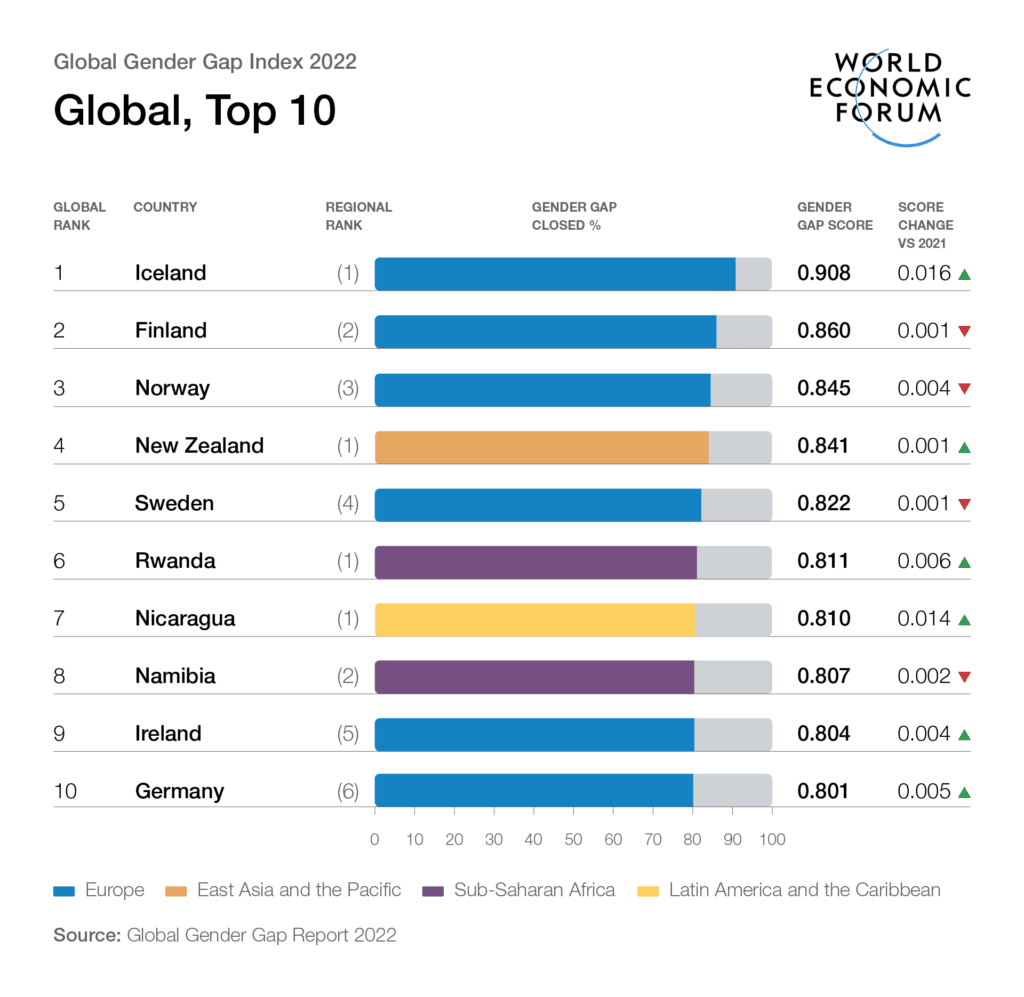
I worked once for a Japanese company where the bosses always were the only ones allowed to speak first. Even if I asked specific questions for someone in their teams, they would wait for their boss to talk first and give them permission to speak. It took me a while to adjust to this mechanism. I found that having a separate meeting with the boss first, and sharing with them all my questions and points in advance would make them more comfortable for meetings with their staff. At first, this felt counterintuitive for me and a pure loss of time. However, after repeated tries with this tactic, things actually went smoother and faster. This means to say that the logic we use in our own culture for leading might be different elsewhere. Be open and flexible to try new things.
PRO TIP
Hierarchical cultures value respect, control, and defined expectations. When interacting with global leaders in this type of context culture, make sure to be very precise and direct about your intentions. Tell them which behaviors you are displaying are your sign of respect. If you decide to have a private conversation with the leader before expanding to the entire staff, tell them you are doing this to show them the respect they deserve. In your culture, this might not be a behavior of respect (and neither in theirs). Still, by expressing what your intentions are, any misunderstandings can be quickly talked about and adjusted. You can learn from the interaction, and all parties can reach new agreements.
4) Deciding
How do the cultures being mapped decide? Are decisions frequently assertive and top-down, or are they discussed and focused on finding consensus?
Example
A Japanese group of investors was between the selection of 2 providers. Several meetings took place to discuss and debate the qualities and benefits of each provider. Between each session, privately-held meetings with specific decision-makers would take place in order to influence them to one side or the other. After many weeks, a decision was made based on almost the entire staff agreeing to the decision. This type group decision-making can take a long while and be very exhausting compared to straightforward decisions where one person responsible for the decision is empowered to make decisions. You might think it’s too ineffective and time-consuming, but then you are missing the point about cultural competence. Your competence comes from adjusting to different cultural needs to make them effective. It’s not about what you think is most effective. It’s about what is most effective in that context and culture.
In the infographic below, you will see an example of the culture map between Japan, France, and Germany. Check the scale for deciding. You will see that Japan is in the most extreme of “Consensus-based.” Before experiencing this culture for myself, I had no idea this could be the case, since Japan is a very hierarchical culture. It only made sense to me that an hierarchical culture would obviously make decisions top-down. As you can see, this is hardly the case for Japan. So what I learned from this experience is that making assumptions like this can be a huge roadblock to success! Don’t do that!
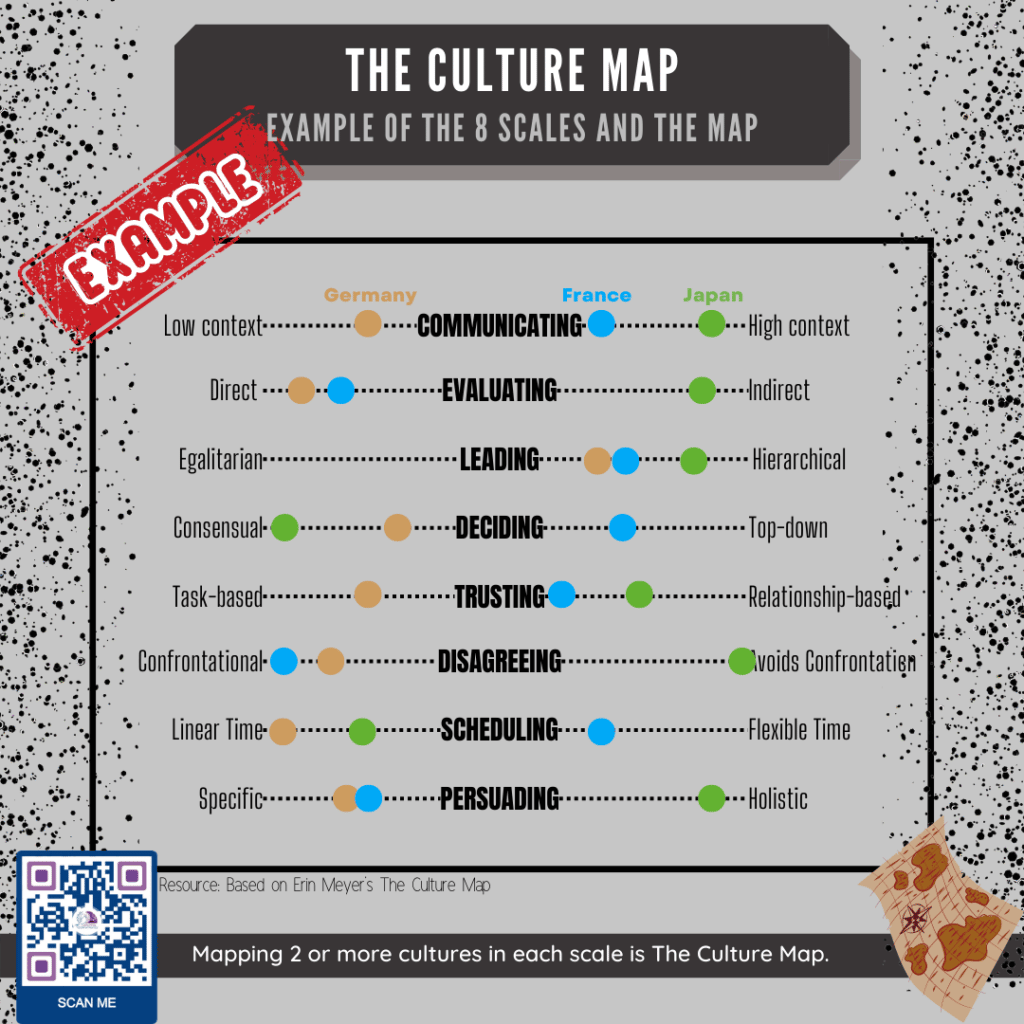
PRO TIP
When navigating complex and high-context cultures, a Corporate Decision Matrix can be very beneficial for faster and better decision-making. This type of Matrix establishes power of attorney for each kind of decision and whether it needs to be approved by or, at least, consulted with other parties. The Matrix establishes clarity for all parties involved in a decision, what the process is, and what to expect. And that’s why it works in both high and low-context cultures. If your company does not possess such a Matrix, introduce an initiative to create one. Take this opportunity to spearhead something unique.
5) Trusting
How do people in the culture being mapped base trust? Do the base it on relationships and how well they know a person or based on how well they work together and perform?
Example
If you must leave your sick dog while you travel, would you prefer to leave it with an unknown but competent Vet in a clinic, or with a trusted friend who would take care of your dog using every little piece of instruction you give? If you answered the Vet, your trust is based on task, authority, and performance. If you answered your friend, your trust is based on relationship, reliability, and experiential reputation. Now transpose this idea into assigning a task to an employee or supplier. How would you base your trust, then?
PRO TIP
Trust is a complex topic that has many factors involved. If you want to learn more about it, read and watch our specific article on trust-building in global settings.
6) Disagreeing
Are disagreements in the cultures being mapped open and direct, or are they often avoided or articulated backstage?
Example
Perez was very disappointed with his company’s new global RTO (return to office Acronym) demands and policy. John, his peer from another country, was also very disappointed. While John wrote a letter to the RH and the CEO to directly express his opinion, Perez would meet daily during lunch with different employees to talk about the subject and influence people to articulate a joint letter.
Disagreements can have different approaches depending on the culture. Cultures that avoid conflict might not come forward with their disappointments. They might articulate actions backstage and often with one or more people since showing several people agreeing with them implies less individual confrontation.
PRO TIP
In global corporate settings where different cultures coexist, understanding what’s going on behind the scenes is almost as important as what you read in the Employee Satisfaction Survey. Informal meetings and satisfaction interviews have become more crucial than ever in these kinds of contexts. Giving people the opportunity to express their thoughts informally is essential to opening the lines of communication.
7) Scheduling
How do the cultures being mapped perceive time? Is it absolute linear points or viewed in a more flexible way?
Example
The US headquarter managers of a big multinational company decided to visit their subsidiary companies in Latin America. During their tour, they were surprised that all meetings started with delays and took at least 5 or 10 minutes to gain traction since small talk was practiced during that time. When each head of these subsidiaries came to the headquarters for a global meeting later that year, they were shocked to be expected at a precise meeting time, and each just had a bare minimum introduction. They perceived the headquarters as “cold” and “not caring.”
A flexible view of the time means people give more attention to who they are talking to at that time than to the time per se. While people who view time more linearly want to follow the schedule and what was agreed upon for that schedule, people who see time more flexibly prefer to adjust according to who is in front of them at the present moment. This is often customary in cultures that value relationships more than tasks and processes.
PRO TIP
When dealing with a new individual or group of people of which culture you are not fully aware of, find someone trustworthy to ask how they see time and scheduling. What do they feel about being a few minutes late? How dissatisfied will they feel if a meeting must be cut short or the topic must be changed on the spot? What about last-minute cancelations? Some of these things sound disrespectful in many cultures, but in others it’s just a sign that they are focusing on what really matters, rather than details. Learn people’s views before becoming upset about specific behaviors.
8) Persuading
How do the cultures being mapped persuade people? Are they focused on giving specific examples and applications, or are they more focused on providing detailed explanations?
Example
I once had 2 Indian employees who worked for me in a finance department. One day, they requested an impromptu virtual meeting to discuss an issue. During one hour, they explained to me the department, how people came and went, which systems they used, which systems were absent, processes, and so on. At the end of the meeting, I still didn’t have a clue what the problem was. They were so distraught that I could not grasp it after their detailed explanation. When I asked them to give me an example of how this issue would manifest itself, things became much clearer for me, and approving the actions they requested seemed a reasonable ask to tackle the issue.
PRO TIP
Problem-solving can be approached in different ways. Some people would rather work with facts and examples, while others would prefer to understand the full context. The same goes for persuading, which is sort of a problem-solving task. If you want to persuade someone, you have to go beyond arguments to be effective. Learn how people will consume these arguments and information.
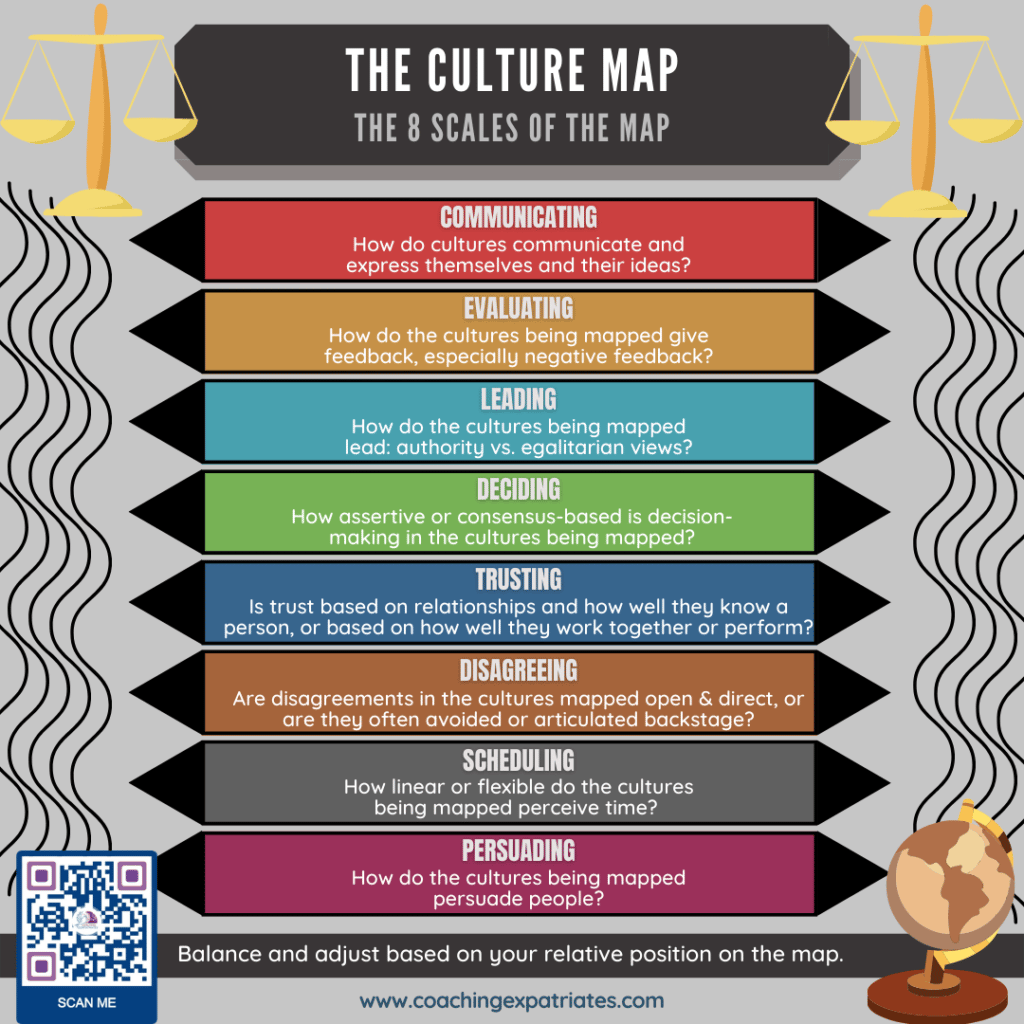
The Culture Map For Big & Small Cultural Differences
Although I do love The Lewis Model and The High & Low Context Culture Model (learn more in our free Academy), I do agree that they are great at helping you pinpoint differences when cultures are in extremes, but more difficult when it comes to cultures that are different but very similar.

For example, it’s easy to spot differences when you put a Mexican and a German working together. When this happens, both people from each culture are kept on their toes and pay a lot of attention to each interaction, knowing that any misunderstandings could lead to trust breaks at any time due to significant cultural gaps.
However, when you put cultures that have fewer gaps between them, it’s actually when things can get hairy over time. Suppose a team has a Mexican and a Brazilian on the same team, both from Latin cultures, which present many cultural similarities. In that case, they can both lower their guard after the first interactions and pay less attention to the next ones, which is when misunderstandings can often start to happen. Erin’s model is especially helpful for these cases when you can pinpoint specific differences and how best to handle them.
When dealing with multicultural teams, lower context patterns are preferred. The reason is that it relies on and sets expectations with fewer nuances and greater transparency that everyone can understand. To achieve this, talk with your teams about creating norms based on the 8 factors from The Culture Map. Have the team reach an agreement and write them down.
Critical Thinking For The Culture Map
Although I do love Erin Meyer’s book and the concept in general, which is extremely powerful to help close gaps, there is a disclaimer I need to make. The Culture Maps are based mainly on these 8 factors, and as you know, cultures possess many more nuances than that.
Models are meant to simplify our worldview and help us make faster and better decisions on the spot. However, we always have to take them with a grain of salt and evaluate things with critical thinking. This means we must be very cautious about not using the model to label people but to help us explore things in the right direction instead. Further exploration is always required. We are dealing with individuals who have hopes and dreams, not robots who all express the same programmed algorithms.
One important final note: The Culture Map is a concept different from “Cultural mapping.” Cultural mapping is a holistic exercise where you map cultural aspects of a specific culture to document their habits, religion, rules, regulations, rituals, norms, etc. In other words, you can work on a Cultural Mapping to learn more about a new specific culture different from yours, and work on The Culture Map to create a map between 2 or more different cultures and see where each stands.
Final Thoughts
Multicultural interactions can be taxing, and these types of exercises are sometimes overwhelming. If you are an international leader dealing with multicultural team members and need extra help when creating The Culture Map for the different cultures in your team, hire me as your executive and leadership coach. We can map out your team together, their cultures, and their 8 factors, and figure out a plan to help your team move from storming to performing. We will work as accountability partners during the execution of your plan to quickly help you lead a safe cultural environment. Have a free strategy call with me.
If you are interested in developing specific global leadership skills to improve your performance as a leader and manager, check out our online Global Executive Leadership Program. We go over all 4 Success Pillars of Global Leadership during 9 online modules specially meant for global leadership.
If you enjoyed this post, consider subscribing to our newsletter using the form below. We focus on providing good content to global leaders and executives who want to make impactful business decisions and be more inclusive and influential. We know your inbox is sacred, so we email just once per week, and we never sell your information. Trust is the basis of Global Leadership, and we fully honor it.

